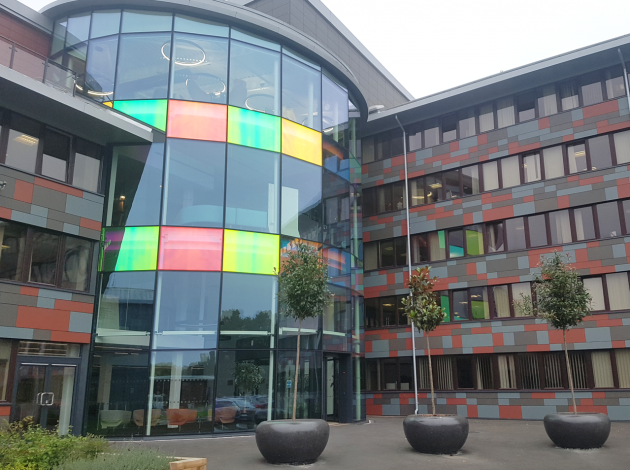The ongoing select committee inquiry into digital government did not pull any punches when it heard oral evidence from GDS director general Kevin Cunnington. But was the digital government chief left on the ropes?
Credit: Parliamentary Copyright
“I’m not trying to not answer your question,” said Kevin Cunnington, a little nervously, having been taken to task by the MPs in front of him.
The director general of the Government Digital Service is certainly not the first tech-focused Whitehall official to appear before a select committee. But part of the raison d’être of GDS is to negate the need for parliamentarians to grill civil servants about failing white-elephant IT projects.
The agile and iterative methods espoused by the organisation – coupled with the spend controls it oversees – are intended to help prevent bloated and ill-conceived technology rollouts that swallow ever-greater amounts of taxpayers’ money while delivering a fraction of their intended benefits. Such projects, which have been all-too-common in the public sector for many years, have often resulted in ministers and officials being grilled by impatient and incredulous MPs.
GDS was supposed to show a different way.
Many would argue that it has done so. But, seven years after it came into being – and after a year in which its worth, purpose, and efficacy have been frequently questioned – the House of Commons Science and Technology Committee decided it was time to turn the spotlight on government’s central digital agency.
The committee’s ongoing digital government inquiry has been receiving written and oral evidence submissions since the autumn. But earlier this month it got the chance, for the first time, to formally meet with Cunnington – who has been in charge of GDS for two and a half years.
He was first asked, simply, whether GDS still has a worthwhile role to play. Cunnington said that, in common with other Cabinet Office units, the digital agency fulfils six key functions: setting cross-government strategy; implementing standards and assurance; providing additional capability; designing services and platforms; offering expertise; and driving continuous improvement.
To ensure its advice and guidelines are heeded, “we have two main controls”, Cunnington told MPs.
“There is the Technology Controls process, where I can sign off – or otherwise – on a department’s plan if it is not within the specifications we adopt. And, secondly, we have the GDS Service Assessment Standard, which gives me similar powers.”
In both cases, if GDS does not wish to green light a department’s spending plans or new service, it can enact an “escalation to ministers”. After which “it is a ministerial job to sort out”, according to the GDS boss.
While Cunnington said that, “in general, there is a very collegiate environment” between departments and GDS, he admitted that some are more enthusiastic adopters than others. Despite being pressed several times – leading to the slightly terse exchange at the top of this piece – he declined to name any departments as less willing or able to pursue transformation, but said that “the smaller departments in general” tend to have less mature digital propositions than their larger counterparts.
The Department for Work and Pensions and HM Revenue and Customs were namechecked as among the most digitally advanced departments.
To quantify the success of GDS so far, Cunnington said the “single greatest measure” could be found in a recent report from the Institute for Government which stated that, between 2015 and 2018 the number of “exemplar services” developed by GDS has risen from 25 to close to 800.
“Just [to add] context, when GDS started in 2012 we had no capability, no people, no profession, and developing digital service was not normal, it was abnormal,” he added.
When asked what extra powers and tools the digital agency might need to deliver the continuous improvement it wishes to enable, Cunnington claimed that the first thing would be “a better analysis of where we are”.
He said: “Intuitively, if you were to ask me, what does good look like – and, therefore, what does less good look like – you would probably put DWP at the front. They have done a really good job in insourcing capability, in breaking up contracts, and in moving things to the cloud. But that is almost my intuition, and I would love to have that maturity index for departments as a set of actual facts that we measure. And so far we have not done that, and I think that is one of the big areas we need to look at.”
Cunnington added: “Within that, I would also want to push departments to get to the same level of maturity, where possible. Because having a fairly long spread of departments is just difficult. When smaller departments are called to do things, it is just more difficult for them than it is for [the DWP].”
The second improvement Cunnington said he would like to see is a different approach to “the enabling environment” that supports digital transformation, and assesses its success.
“We have done a lot to digitise government, we have done a lot to improve the local processes between us – via the Technology Controls process – but we probably haven’t done enough to transform the way we fund, assess, and potentially audit digital transformation going forward. I think there is work there to be done to make that more modern and in line with the other work we have done locally within digital itself.”
Removing inertia
In the last year, a number of onlookers have questioned whether GDS has the necessary muscle to bring digital laggards into line. But Cunnington told the committee that he has “never felt that having a mandate… really works”.
“Because when people don’t do [something], it is not because they need to order you to do it. It is often because there are good local reasons why they cannot,” he said.
He denied MPs’ suggestion that failure to transform can also sometimes be attributed to an inertia that remains embedded within some departments.
Cunnington said: “We have created a profession of 17,000 people in government, we have created 38 job roles, we have provided a much better career offer, and we have trained 10,000 people through the academies. It is less about inertia – because we have removed a lot of inertia from the system – it is just about getting people to the same standard.”
“I would love to have a maturity index for departments… I think that is one of the big areas we need to look at. I would also want to push departments to get to the same level of maturity, where possible.”
One obstacle to transformation that does remain in place is legacy technology, which the GDS chief remains present “in every department”. Removing ageing tech is harder than it would be in the private sector as a result of “legislative constraints”.
The spending review that will take place later this year was characterised by Cunnington as a critical opportunity for the removal of legacy technology to be prioritised.
At the conclusion of an occasionally slightly strained hour in the company of the select committee, Cunnington encouraged MPs to take an even closer look at the legacy of his own organisation.
He said: “If you want to see agile in practice, come and pay us a visit – and we’ll show you round.”



